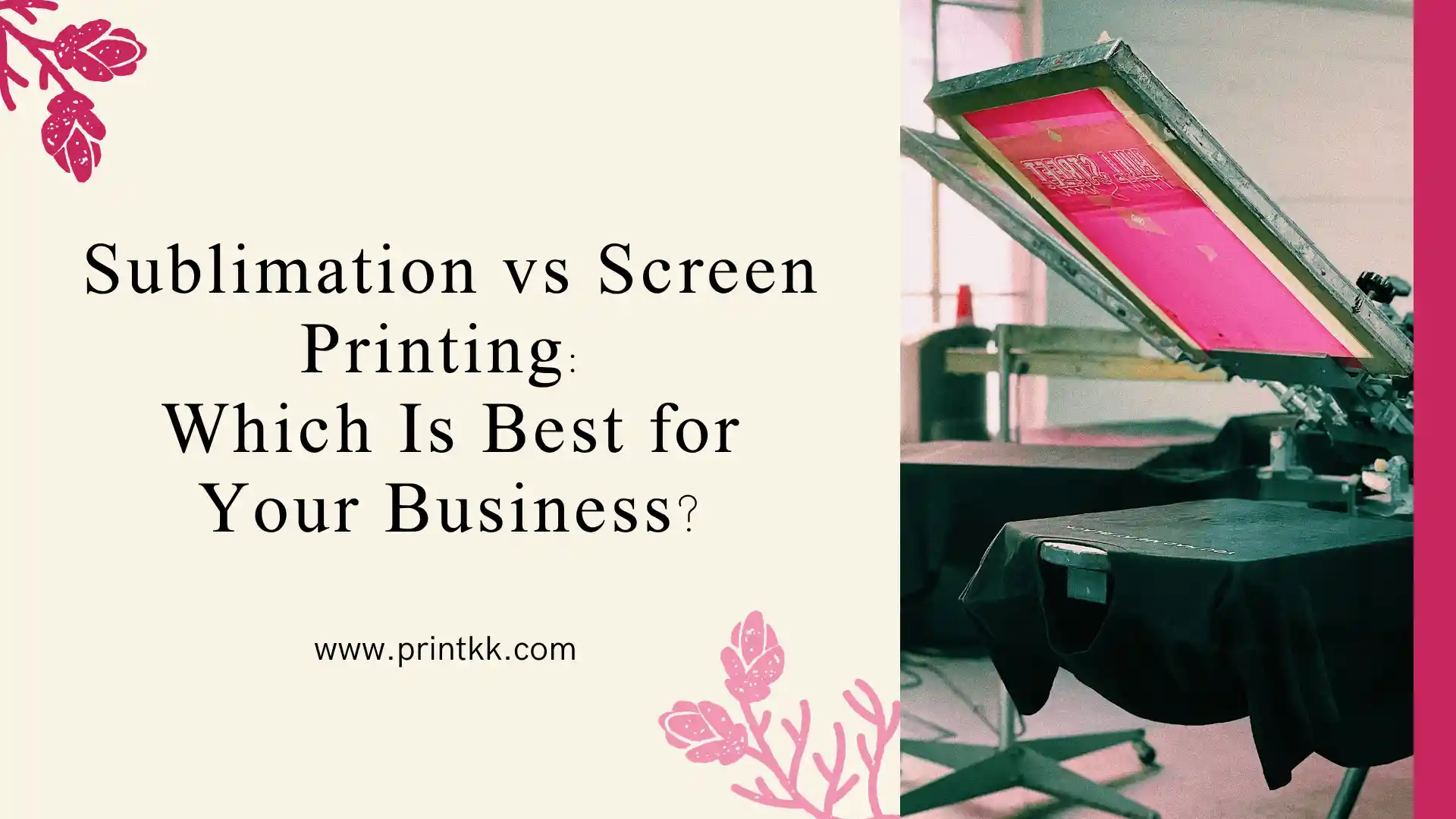
When it comes to bringing your creative ideas to life on fabric, choosing the right printing method can feel overwhelming. Sublimation and screen printing are both popular choices—but which one truly fits your business?
Whether you're running a small shop, a home studio, or just starting out, knowing the strengths and quirks of each technique can save you time, money, and headaches.
In this blog, we'll break down sublimation and screen printing in a simple, straightforward way so you can confidently pick the perfect method to make your products stand out.
What Is Sublimation Printing?
Sublimation printing is a method that uses heat to transfer dye onto fabrics or coated materials. Unlike traditional printing, the ink turns into gas under high heat and bonds with the fabric fibers. This creates vibrant, long-lasting designs that won't crack or fade easily.
Pros of Sublimation Printing
- High Detail & Color Brilliance – Produces photorealistic prints with smooth gradients.
- Durability – Designs resist peeling, even after many washes.
- No Texture Change – The fabric stays soft since the ink embeds into the material.
- Full-Coverage Potential – Prints can cover the entire garment seamlessly.
Cons of Sublimation Printing
- Fabric Limitations – Works best on polyester or polymer-coated surfaces.
- Startup Costs – Requires special printers and sublimation inks.
- No Dark Fabric Printing – Shows poorly on black or dark-colored materials.
- Small-Batch Unfriendliness – More cost-effective for bulk orders.
Sublimation is ideal for businesses prioritizing vibrant, all-over prints on light fabrics. If you need versatility for cotton or small runs, other methods like screen printing may suit you better.
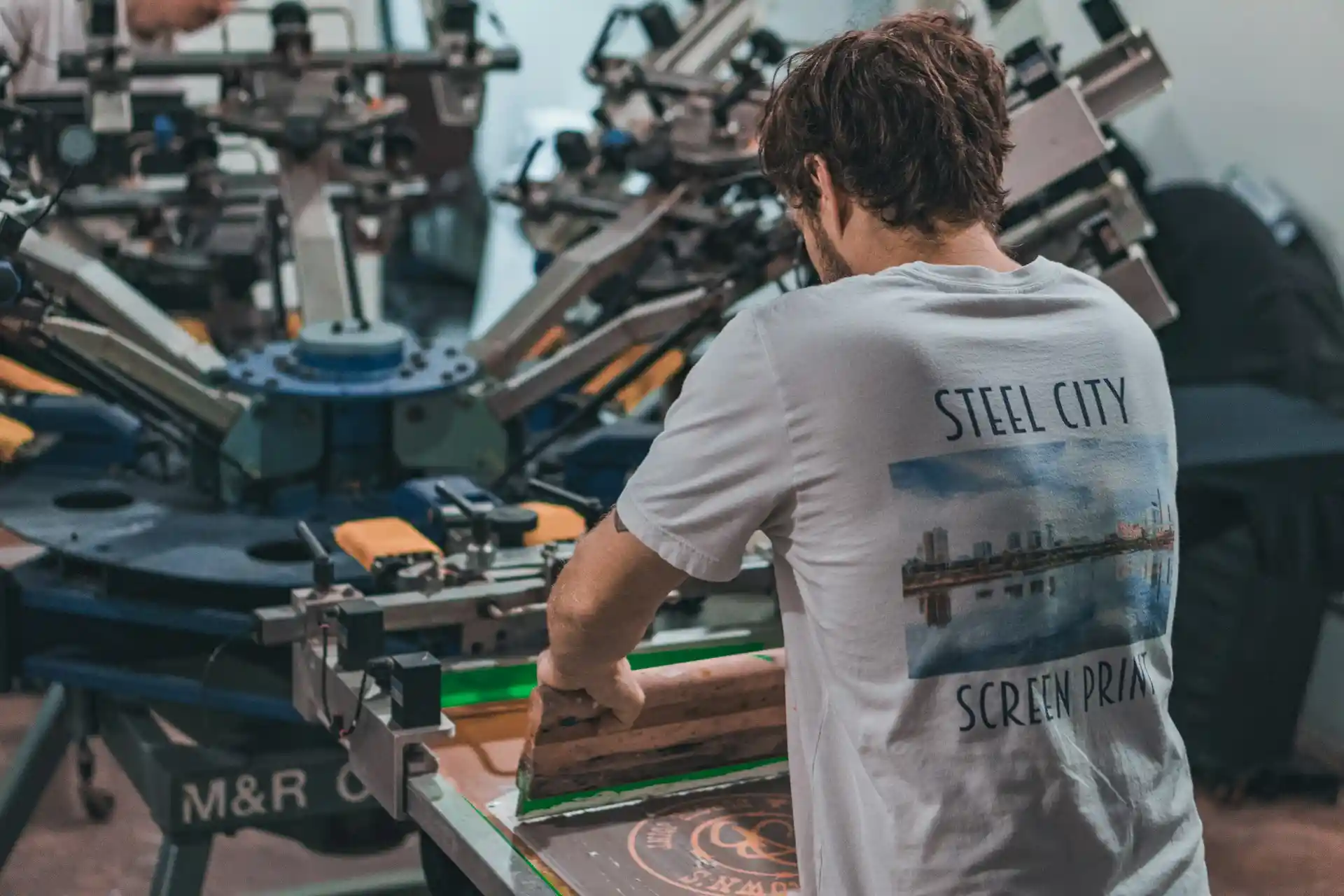
What Is Screen Printing?
Screen printing is a classic technique where ink is pressed through a fine mesh screen onto fabric or other surfaces. Each color in the design requires a separate screen, making it ideal for bold, layered graphics.
Pros of Screen Printing
- Vibrant on Dark Fabrics – Opaque inks pop even on black or colored materials.
- Cost-Effective for Bulk – Unit price drops significantly with large orders.
- Long-Lasting Results – Thick ink layers resist fading over time.
- Material Versatility – Works on cotton, polyester, wood, glass, and more.
Cons of Screen Printing
- High Setup Effort – Each color needs a separate screen, increasing initial time/cost.
- Less Detail-Friendly – Fine gradients or photorealistic art can be challenging.
- Stiffer Feel – Heavy ink layers may slightly reduce fabric softness.
- Small-Batch Costs – Impractical for tiny orders due to screen preparation.
Screen printing shines for simple, high-contrast designs on diverse materials—especially in bulk. For intricate artwork or micro-runs, alternatives like sublimation may work better.
Sublimation vs Screen Printing: 14 Key Differences
Print Quality
Turns out sublimation does create very well-detailed prints. The colors are vibrant and flat because the ink becomes part of the fabric.
Stenciling by screen also produces good quality but can charm as the ink meets the substrate. Sublimation usually wins for sharp, picture-like photos.
Durability
Sublimation prints are very durable. The ink adheres to the fabric, preventing the design from easily cracking, peeling, or fading.
Screen printing can resist a lot of washing but may weaken after many washes, which very much depends on the thickness of the ink. Both methods stand up to washes well, but the feel of the print may vary over time.
Print Complexity
Sublimation printing truly shines when handling intricate designs like photographic images, watercolor effects, and subtle color transitions.
Screen printing, while excellent for bold graphics, faces limitations with highly detailed work. Each color requires a separate screen and precise alignment, which can make fine details appear slightly blurred.

Print On Demand Women's T-Shirt Dress - PrintKK
Number of Colors
Sublimation can print an unlimited number of colors all at once, even photographs, because the process uses a continuous-tone digital printing method that blends hues seamlessly.
Screen printing is bound by the number of screens produced, making complex multicolor designs more time-consuming and expensive to produce. produced. Typically, up to 4 or 5 color designs are ideal for screen printing.
Special Effects
Screen print is available with many special features such as puff, glitter, or metallic inks, which can be layered to create unique dimensional effects that catch the eye and add tactile interest.
Sublimation simply can't match that. The ink soaks into the fabric and provides a completely smooth, texture-free finish. It's great for photographic reproductions, but it lacks physical dimensionality.
Fabrics and Materials
Sublimation is best on polyester and special coatings on items such as mugs or phone cases. It won't be very effective with cotton or dark fabrics.
Screen printing can be applied to nearly any fabric—cotton, poly, or a blend. This makes screen printing more versatile with materials.
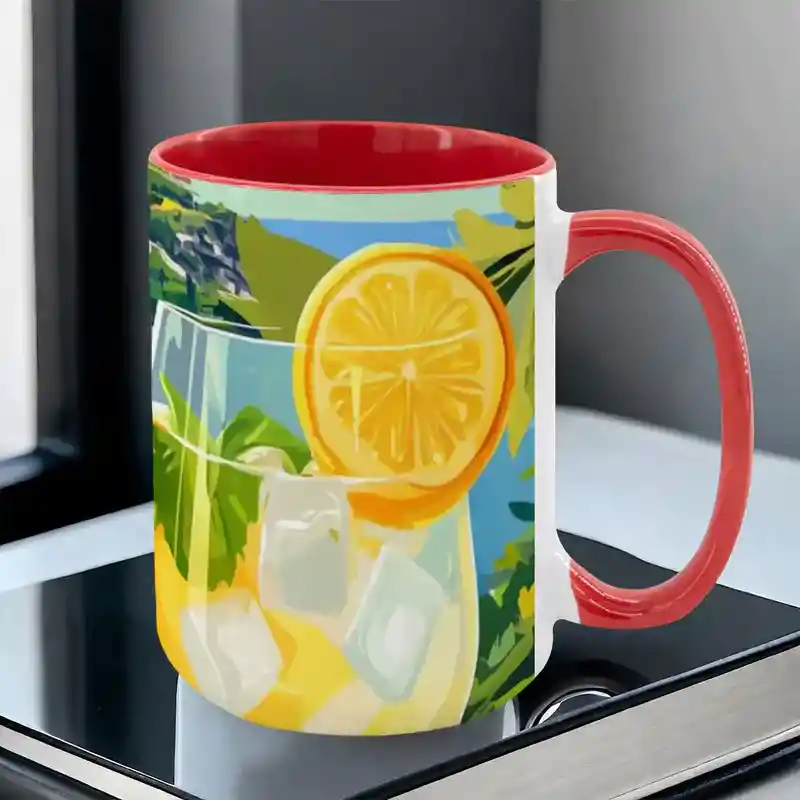
Custom Large Colorful Mug (15oz) (Made in USA) - Print-On-Demand - PrintKK
Eco-Friendliness
Sublimation uses water-based inks and produces low amounts of waste, which is more eco-friendly. Since the ink becomes part of the fabric, there's no leftover ink or rinsing required.
Screen printing requires more water and chemicals for cleaning, and can therefore be less eco-friendly. Ink waste, screen washing, and chemical use can create more environmental impact if not managed properly.
Quantity
Screen printing is ideal for larger volumes. Printing hundreds or thousands becomes fast and cheaper once the screen is in place.
Sublimation is excellent for small to medium orders since it involves less setup time, although it may be slower for very high quantities.
Cost Efficiency
Sublimation is usually cheaper for small orders because it involves very low setup costs.
Screen printing is more expensive upfront due to screen making, but becomes cheaper as the order size increases. Screen printing is more cost-effective for large orders.
On-demand Fulfillment
Sublimation supports print on demand mode well. You can easily print one piece at a time with little waste.
Screen printing requires extra prep time, so it's not great for quick, one-time orders. Sublimation works well for making custom or personalized items.
Upfront Investment
Sublimation is a heat-transfer process that demands specialty dyes and a digital printer, followed by a heat press, which comes with a certain—although not completely insurmountable—financial cost that might render the process too costly for some small businesses.
Screen printing requires screens, squeegees, and sometimes large presses, all of which are more expensive upfront. It also takes more time to set up.

Consistency
Once you're set up, screen printing can offer very consistent results. Each print looks nearly identical.
This makes it great for large orders where every item needs to match.
Sublimation is a bit variable depending on the temperature and pressure during the process but is generally consistent for most purposes.
Minor changes in heat or material type can affect color slightly, but the difference is usually small.
Production Speed
Screen printing is faster for large batches since the screens can be reused within minutes after preparation. Once the setup is done, printing dozens or even hundreds of items goes quickly.
Sublimation takes more time per piece because each item must be pressed individually. For small runs, sublimation is fast enough, but for volume, screen printing wins.
Scalability
Screen printing is well suited for large orders—the more you produce, the lower the cost per item—and it scales quickly. Sublimation is more scalable for small to mid-sized runs and custom products.
Businesses aiming for mass production may opt for screen printing, while those focused on customization often choose sublimation.
Read More:
- Embroidery vs Screen Printing: Which Is Better for you?
- Sublimation Printing vs. Screen Printing: Key Differences
Which Printing Method Is Right for Home Makers or Small Studios?
If you're working from a small studio or even just your kitchen table, both sublimation and screen printing can be great options—but they work very differently.
Sublimation printing might be right for you if you want to print on different items like mugs, puzzles, or polyester shirts.
It's clean, quiet, and doesn't take much space. You just need a sublimation printer, special ink, paper, and a heat press. Once set up, it's pretty simple to use.
But there's a catch. Sublimation only works well on light-colored polyester fabrics or items that say they're "sublimation-ready."
Cotton shirts? Not a good match. If you're okay sticking to poly blends and bright colors, this could work.
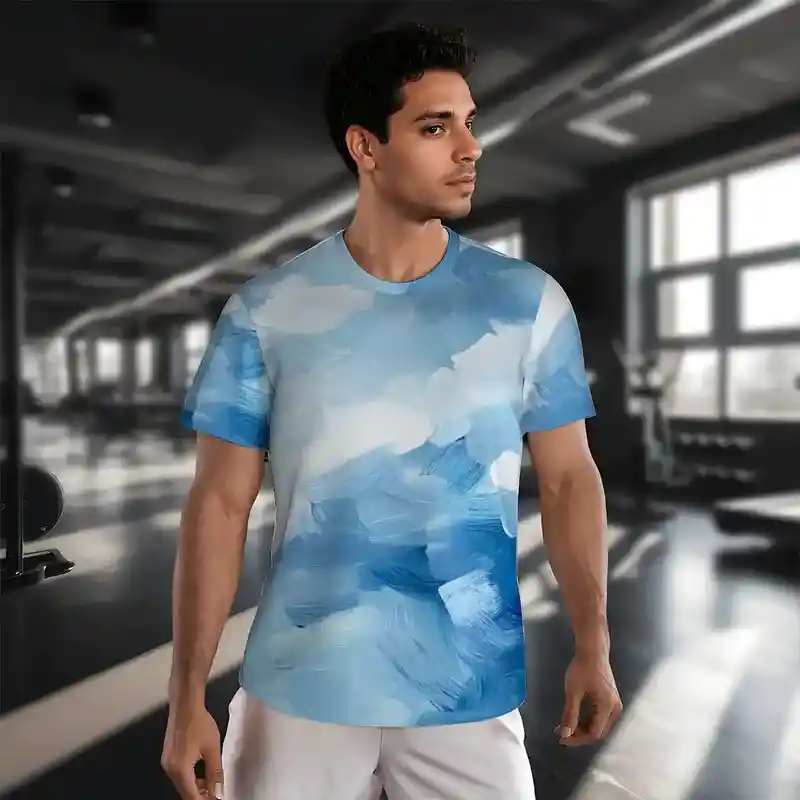
Custom Men's Mesh T-Shirt - Print on Demand Fulfillment - PrintKK
Screen printing is more hands-on. It takes longer to set up, and making custom screens can cost more—especially if your design has lots of colors. But if you're printing one-color designs on cotton shirts, it's a solid choice.
You also get more control over the feel of the print and the final result. Plus, you can reuse screens for repeat prints.
Here's a quick breakdown:
- Sublimation: better for small items and full-color designs
- Screen printing: better for cotton, dark colors, and simple designs
If you're just starting and want flexibility, sublimation is often easier. But if you already have some tools, screen printing could save you money.
How to Make Your Sublimated and Screen Printed Shirts Last Longer
Want your shirts to stay looking fresh? A few simple steps can help, whether you're using sublimation or screen printing.
For sublimated shirts, the print is part of the fabric. It won't peel or crack. But it can fade slowly over time—mostly from sun exposure or very hot dryers.
Polyester shirts hold the color best. Poly blends may fade a little sooner, but the image won't come off.
For screen printed shirts, the ink sits on top. That means over time, it might crack or peel—especially if you wash it wrong.
Here's how to care for both:
- Wash inside out
- Use cold or cool water
- Avoid harsh detergents
- Skip the dryer when you can
- Don't bleach
Line drying is the gentlest option. It keeps prints and fabric in better shape, especially in warm places. Also, try to avoid ironing directly on the print.
Taking care of your shirts = keeping them looking good longer. It doesn't take much—just a little care each time you wash.
Get High-Quality Sublimation Printing Products at PrintKK
Looking for vibrant, durable custom products? PrintKK delivers professional sublimation printing that brings your designs to life. Simply upload any artwork or photo—we handle the rest.
Choose from our wide product range:
- Game-changing mahjong mats
- Personalized baseball caps
- Bold swimsuits
- Custom shirts
- Custom Photo mugs
- Trendy tote bags
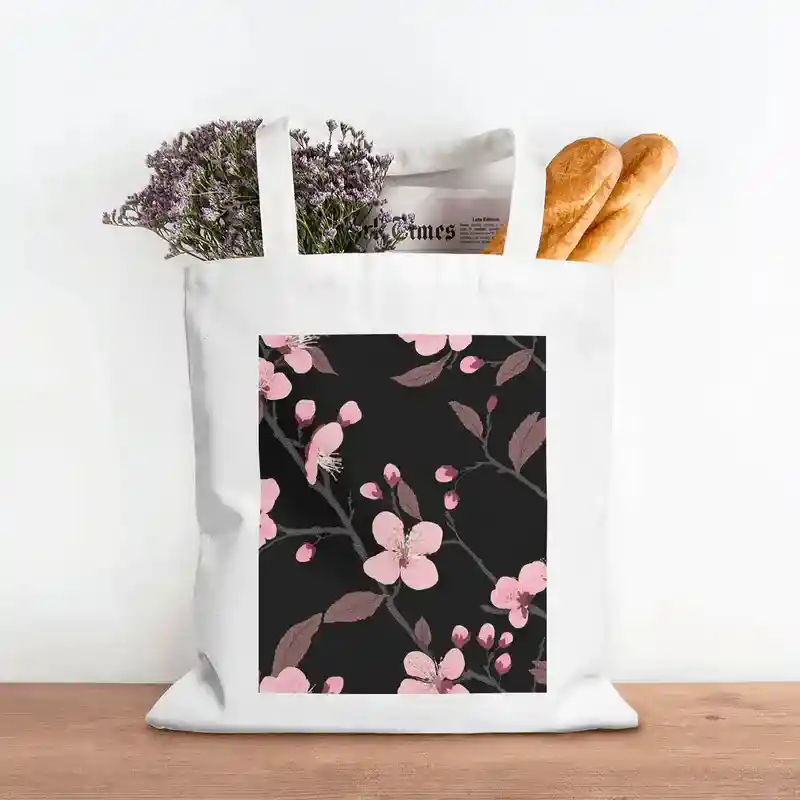
Print on Demand Canvas Tote Bag (Made in USA) - Handbag - PrintKK
No matter your order size—our prices stay competitive. Order one unique piece for yourself or bulk quantities for resale. Both options give you crisp, fade-resistant results.
Start designing today. Your creations deserve quality printing that lasts.
Sublimation vs Screen Printing: Which Is Best for Your Business?
Choosing between sublimation and screen printing depends on your business needs. Sublimation works best for colorful, detailed designs on polyester fabrics and specialty items. Screen printing suits bold, simple graphics on cotton garments and bulk orders.
You don't have to pick just one. Many businesses use both to cover all customer requests. With PrintKK's reliable services, you can experiment freely. Focus on what makes your brand unique—we'll handle the printing magic.
FAQs
Which lasts longer?
Sublimation bonds with fabric fibers, resisting cracks/fades for years. Screen printing's thick layers also endure but may peel if stretched or washed roughly.
Best shirts for sublimation?
100% polyester or poly-coated fabrics work best—the dye needs synthetic fibers to bond. Avoid cotton blends (under 20% poly).
Sublimation's main uses?
Ideal for photorealistic prints, all-over designs, and items needing vibrant colors (mugs, leggings, flags). Limited to light-colored synthetics.
Screen printing's main uses?
Perfect for bold logos, simple graphics, and dark fabrics. Used on tees, posters, tote bags—any material accepting ink layers.
Cost difference?
Sublimation wins for small batches (no setup fees). Screen printing cheaper at scale (500+ units) despite higher initial costs.










 Global Shipping
Global Shipping


 Made in USA
Made in USA



























